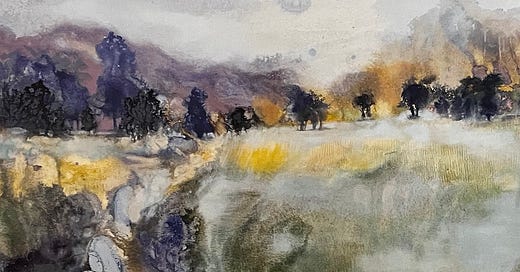I walked past it thousands of times. It reminded me to breathe. It reminded me that whatever I would see when I stepped across the threshold into the emergency department, beauty remained. There is still light and color, even amid the worst I could imagine (or beyond). Countless times, I closed my eyes to remember the purples, whites, yellows, and muted greens of that canvas. It was a temporary relief from the horror of the sights, sounds, and smells of trauma and death.

There is art all around the hospital. I’ve said it before: it would be beautiful if it weren’t so awful. Or maybe it’s both. I think of the colored glass mobile in the entryway of the Women’s and Children’s Hospital. This was the gateway to a place where I watched newborns die and baptized them with weeping parents and medical staff in the congregation. I think of the mural outside of imaging on the way to the Heart Institute. It was painted as a tribute to the healthcare workers who served amid the chaos and death of a global pandemic. I can hear the soft strumming of a guitar and a gentle voice singing favorite songs and hymns with a family while they sit with their loved one in hospice. I see the faces of stillborn babies sketched with loving precision by one of the healing artists as a treasured keepsake for a parent who will go home otherwise empty-handed. I even think of the much-disputed “Is that horse pooping?” photograph that hangs in the surgical square.
Art provides beauty amid the suffering, pain, and loss of the hospital. It’s more than a mere distraction. It is visible evidence that beauty and bleakness, joy and pain, suffering and relief, desperation and hope, grief and salvation all co-exist. It’s not one thing or the other. All these things exist simultaneously and often inform one another.
There is no light without darkness.
There is no love without loss.
There is no life without death.
Life is complicated and beautiful. It’s difficult and worth living to the full.



